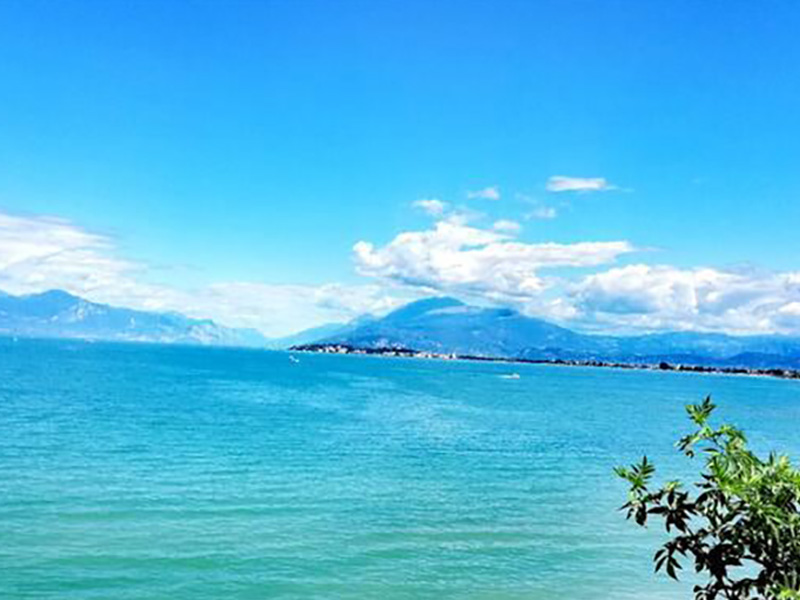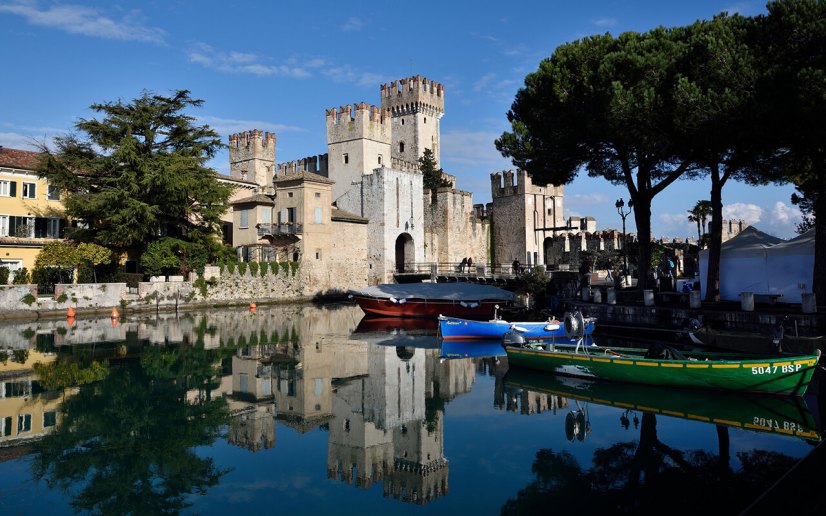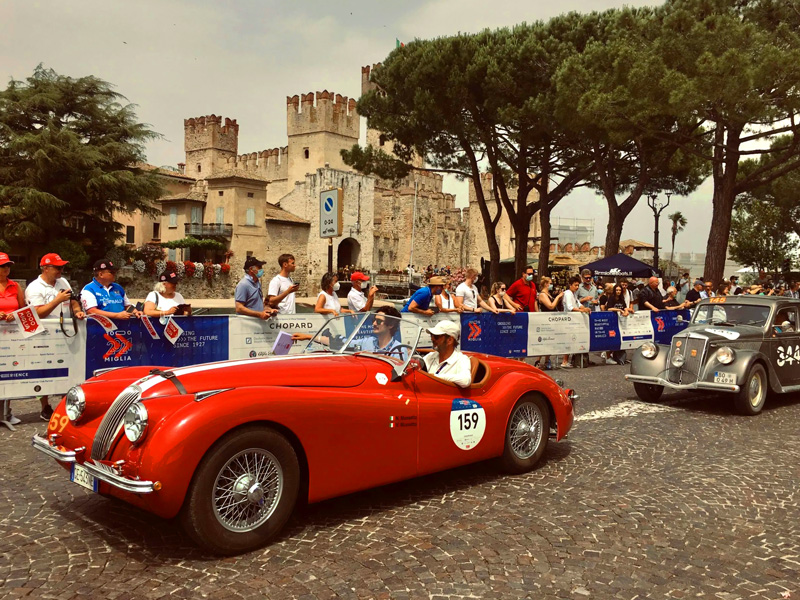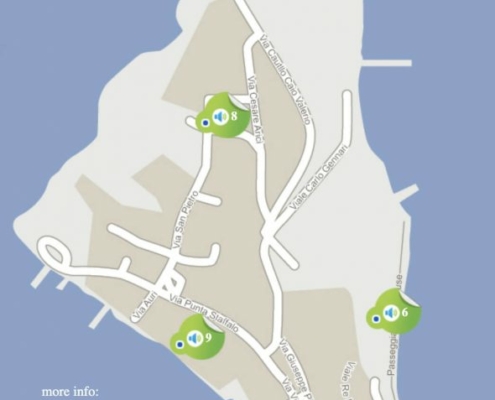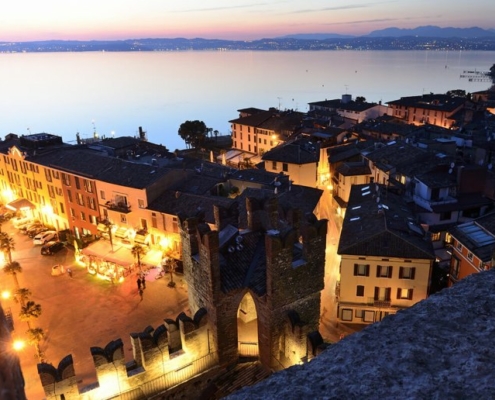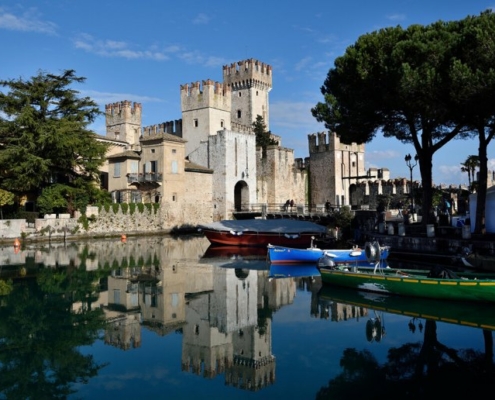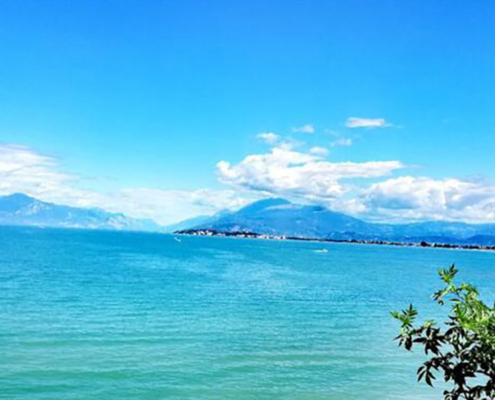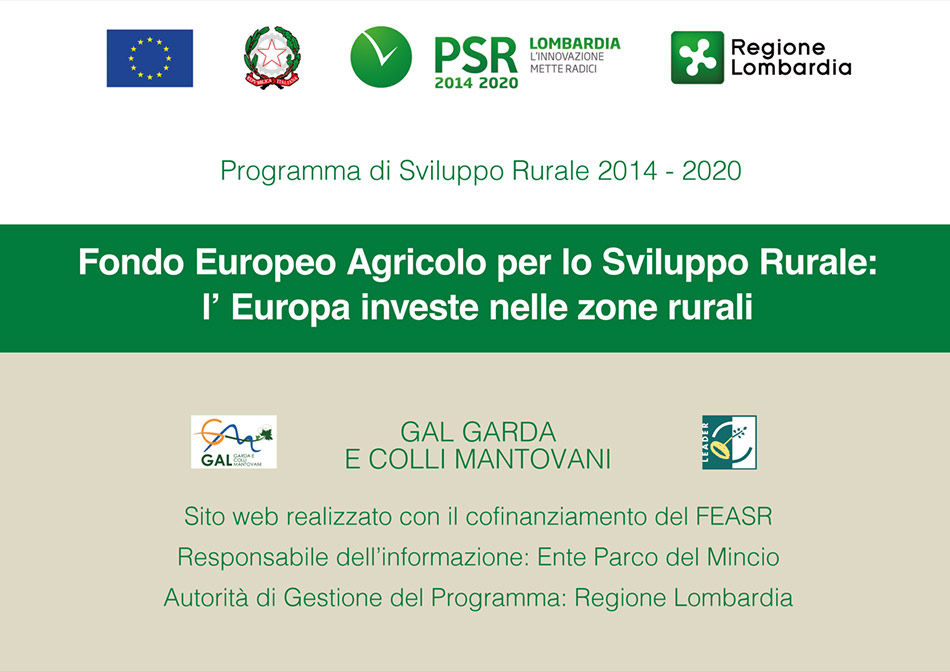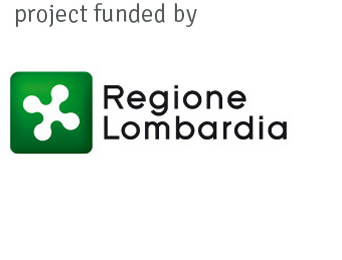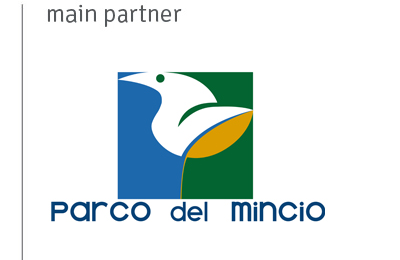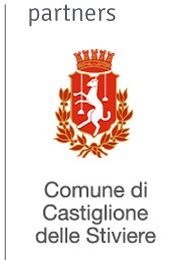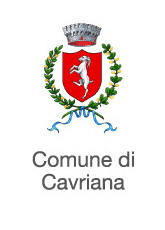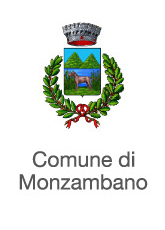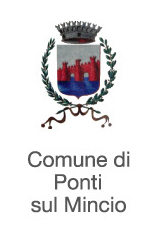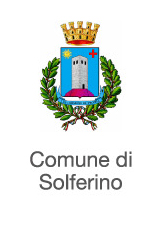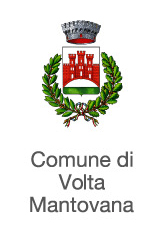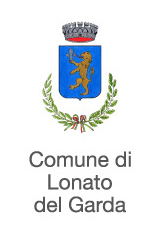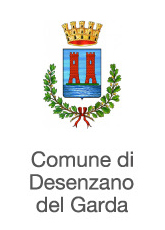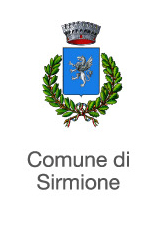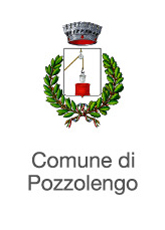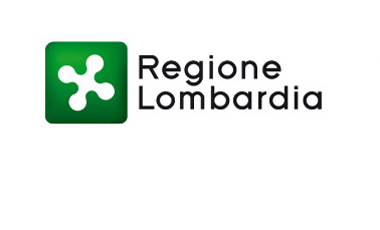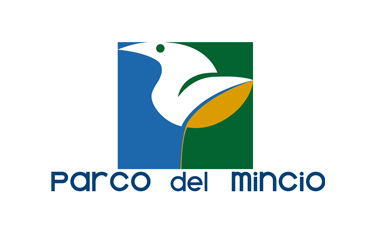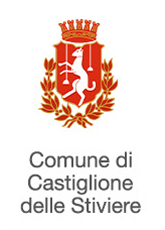![]() – Sirmione
– Sirmione
Sirmione audio guide
Load the chapters of the audio guide onto your mp3 player and arrive at the entrance of the bridge that leads to the historic center of Sirmione: from there the itinerary begins which will take you to Piazza Castello, then up towards the church of Santa Maria della Neve and up to the Grotte di Catullo. You will descend along the opposite side of the peninsula to meet the Thermal Baths and end the route in Piazza Carducci. In the last chapters of the audio guide you will find gastronomic advice and directions for itineraries outside the historic centre.
The stages of the visit
1 – Introduction
2 – Tips for a visit
3 – The church of Sant’Anna
4 – The castle
5 – The church of Santa Maria Maggiore
6 – From Santa Maria Maggiore to the Grotte di Catullo
7 – Grotte di Catullo
8 – The church of San Pietro in Mavino
9 – Sirmione spa
10 – Piazza Carducci
11 – At the table with oil, wine and pike
12 – Other itineraries – download audio guide
Complete texts of the audio guides
1. Introduction
The Sirmione peninsula extends for 4 km in the heart of Lake Garda. Its fortunate position and mild climate explain the presence of man in all eras of history, from pile-dwelling settlements onwards. Artists and poets have frequented and sung about this town, testifying to the charm it has exercised across all ages. The historic center stands on a triangle of land just over a kilometer long and about seven hundred meters wide, on which three hills rise just under a hundred meters above sea level: Cortine, San Pietro and the “Grotte di Catullo“.
2. Tips for a visit
The visit begins in Largo Goethe, at the entrance to the bridge that leads to the historic center. The itinerary to follow is that of a slow walk, which allows you to admire the remains of the past and the beauty of nature. The first part of the route, which mainly overlooks the eastern side of the lake, will allow you to admire the church of Sant’Anna, the Scaligero Castle, the church of Santa Maria Maggiore and the remains of the church of San Salvatore, to reach the access of the archaeological park of the “Grotte di Catullo”. From here the way back begins. After climbing the hill where the church of San Pietro in Mavinas is located, you descend on the western side of the peninsula, encountering the “Catullo” spa establishment, via Vittorio Emanuele and Piazza Carducci, the boat landing place. A few more steps and we return to the bridge, from which the visit started.
3. The church of Sant’Anna
As soon as you cross the bridge, on the left, there is the small church of Santa Maria del Ponte, dating back to the end of the fifteenth century, a small church with a single nave connected to the castle complex. Since time immemorial it has been called the “Church of Sant’Anna” as the figure venerated here in a fragment of a fresco is identified with the mother of the Madonna. A little further on, in front, you can admire the grandeur of the Scaligero Castle.
4. The Castle
The Castle of Sirmione, one of the most complete and best preserved in Italy, was begun by Mastino Primo della Scala, lord of Verona, around 1259 and completed in two successive phases. The fortress, completely surrounded by water and intended for the defense of the village and the control of the lake, was occupied by a garrison. Having entered from the drawbridge, it is possible to walk along the patrol walkways and access, via 146 steps, the top of the keep, the eastern tower which measures thirty metres, from where you can enjoy a breathtaking view. There is a fee to visit the castle. Continue, beyond the castle, to the right, along the wall of the pit and turn left, walking uphill via Dante. You arrive next to the southern wall of the church of Santa Maria Maggiore and walking along it you reach its façade.
5. The church of Santa Maria Maggiore
Santa Maria Maggiore, also called Santa Maria della Neve, is the parish church of Sirmione. The building rests its northern side on the medieval fortification walls that closed the village to the north. Its construction dates back to the end of the 15th century, as can be seen from the lively votive frescoes, dating back to the early 1500s, which cover its walls. The interior has a single nave and five altars. It is accessed from a five-arched portico, once part of the cemetery adjacent to the church: five tombs are in fact visible on the floor. Often, in the past, older materials were reused for new constructions. We can see two examples here. The last column of the portico, to the left of those who enter, is in fact a milestone dedicated to the emperor Julian the Apostate, who lived in the 4th century AD. In the churchyard there is also a memorial stone dedicated to Jupiter used as an alms box.
6. From Santa Maria Maggiore to the Grotte di Catullo
Walking along the northern wall of the church, along the churchyard, you arrive at a terrace from which you can enjoy the view of the eastern part of the lake towards Monte Baldo. Go down the side stairs and go up along Via Ansa dei Longobardi to reach, as soon as you enter the public park, on the left, the remains of the church of San Salvatore, dating back to the 8th century. Returning to the path of the public park, continue to the left and then go down to the right, taking a small and steep staircase that leads to the shore of the lake, along the Passeggiata delle Muse. Turning left you can continue along the lake to Lido delle Bionde. After the bathing establishment, on the left, an uphill path leads to Via Catullo. Turn right and, at the end of the street you will find Piazzale Orti Manara, from where you have access to the archaeological park of the “Grotte di Catullo”.
7. Le “Grotte di Catullo”
Paeninsularum Sirmio insularumque ocelle… (O Sirmione, pearl of the islands and peninsulas…) The poet Catullus (born in 87 and died in 54 BC) certainly frequented Sirmione, but the ruins named after him belong to a building built almost a century After. It is a vast archaeological park of 20 thousand square metres, located on the northern end of the peninsula, where the imposing Roman remains emerge between the green of the olive trees and the blue of the lake. In reality, very little remains of the building, whose materials have been looted and removed over the centuries. However, you can admire the grandeur of the building, especially if before the visit you stop in the Antiquarium, where a model is on display that gives an idea of the entire structure. The Antiquarium, located at the entrance, preserves numerous finds belonging to different ages found during archaeological excavations inside the villa, in the center of Sirmione and in other Garda areas. The visit to the archaeological park is subject to a fee. After leaving the caves, retracing your steps, take the first street on the right, uphill, which leads to the church of San Pietro in Mavinas.
8. The church of San Pietro in Mavinas
The church of San Pietro in Mavinas (from the Latin “in summas vineas”, among the highest vineyards) dates back to the 8th century, while its bell tower is later, built between the 11th and 12th centuries. The frescoes in the three apses also belong to the same period, while those along the walls were painted in 1320, the date in which the church was partially rebuilt and raised. In the mid-nineteenth century, due to its out-of-the-way location, it was still inhabited by a hermit. The surrounding area, formerly used as a cemetery, was landscaped in the 19th century. Since 1955 the bell in the churchyard, the “Julia”, has remembered the fallen of the two world wars with its serious tolling. Beyond the church, along via San Pietro in Mavinas, you reach the western side of the peninsula. At the bottom of the descent, turning left, after a few hundred metres, you arrive at the “Catullo” spa.
9. Sirmione spa
The Boiola spring, which flows 400 meters from the eastern shore of the peninsula, has been known since ancient times for its beneficial effects. Its precious bromine-iodic sulphurous water, which feeds two spa centres, the “Catullo” of Sirmione and the “Virgilio” of Colombare, proves effective in the treatment of respiratory, vascular and dermatological conditions. In the two spa centres, inhalation treatments, mud therapy and massages are practiced. The Treatment Center for Rhinogenic Deafness in Sirmione is among the most renowned in Europe, while a well-equipped Bronchopneumology Center is active in the Colombare plant. For some years the “Catullo” thermal park has been enriched by “Aquaria”, the Thermal Wellness Center which combines the most modern technology with thermal water and mud. Beyond the Catullo thermal establishment, continue along Via Vittorio Emanuele until you reach Piazza Carducci, where the boat landing place is located.
10. Piazza Carducci
Piazza Carducci, the town’s living room, was once a port called Gazzarra. Illustrious travelers arrived here by steamship from Desenzano, attracted by the fame of Sirmione, which on the wings of Catullus’ verses soon spread beyond national borders. The “veste Sirmio” fascinated, among others, Queen Margherita, Giosuè Carducci, Ezra Pound, James Joyce and many others. In less distant times, from the second half of the 20th century, it became one of the destinations of the international jet-set. But it is to Maria Callas that the name of the peninsula is linked: “I am so nostalgic for Sirmione” – she confided to a friend, shortly before her death in Paris, on 16 September 1977. The famous soprano in fact spent long periods in Sirmione, resting in the Sirmione villa of her husband, Giovanni Battista Meneghini, far from the strains of her intense artistic activity. A few more steps and you return to Piazza Castello and then to the bridge, from which the visit began.
11. At the table with oil, wine and pike
The food and wine of Lake Garda has long received international recognition. The key elements of the tradition are three: the delicate oil, produced throughout the coast, the wine, called “Lugana” from the area south of the lake where it is born, and some types of fish, such as pike, carpione and perch. The numerous and renowned restaurants in the area know how to offer these specialties in refined and tasty recipes.
12. Other Itineraries
In Sirmione a happy union between art and nature is celebrated which must be admired by adapting to the slow and restful rhythms of the undertow of the waves. In recent years, a pedestrian walk has been created that allows you to travel along the eastern coast, from Punta Grò, to the rocks of Lido delle Bionde, under the ridge that supports the Roman villa. It is a route of approximately 6 kilometres, immersed in the blue of the sky and water. More romantic, however, on the west coast, the “Walk of Poets”, which goes around Punta Staffalo, in sight of the old lighthouse which warns sailors of the banks of rocks. The Walk of Poets is entered at the end of via Vittorio Emanuele, along via Punta Staffalo.
Good to know


